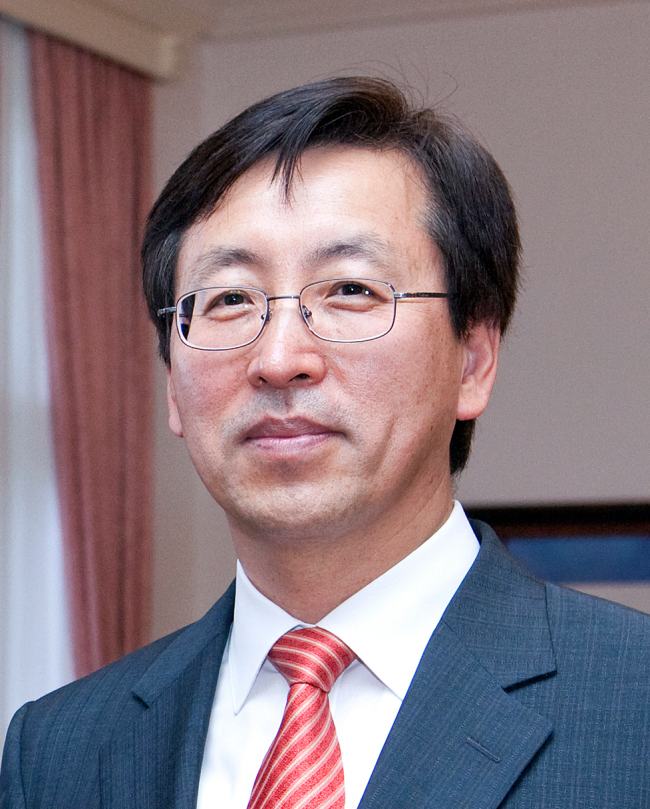This year’s August is a month of great significance to Singapore as well as Korea. The two countries will commemorate their 50th and 70th anniversary of independence respectively. In addition, this month includes another commemorative day for both countries -- Aug. 8, 1975, when diplomatic relations were formalized 40 years ago.
Even though Korea had trade representative and consulate general offices in Singapore in the early 1970s, diplomatic relations only began some years later due to the political circumstances of that time. Despite this relatively short period of official relations, the substance of the relationship has grown from strength to strength. Indeed, remarkable progress has been witnessed over the past 40 years in a wide range of areas from politics, trade, business, people-to-people links and culture. Let me highlight their salient features.
Even though Korea had trade representative and consulate general offices in Singapore in the early 1970s, diplomatic relations only began some years later due to the political circumstances of that time. Despite this relatively short period of official relations, the substance of the relationship has grown from strength to strength. Indeed, remarkable progress has been witnessed over the past 40 years in a wide range of areas from politics, trade, business, people-to-people links and culture. Let me highlight their salient features.

First and foremost, active interaction between the leaders of the two nations is the driving force behind their strong bilateral ties. For instance, since President Park Geun-hye took office, the two countries’ leaders have exchanged visits at least once every year. President Park and Prime Minister Lee Hsien Loong had summit meetings on the same day of Dec. 11 in both 2013 and 2014 -- Prime Minister Lee paid an official visit to Korea in December 2013 and visited Korea again to attend the Korea-ASEAN Commemorative Summit in December 2014. In March this year, President Park visited Singapore to attend the late Prime Minister Lee Kuan Yew’s state funeral. President Park’s long personal ties with the late Prime Minister Lee Kuan Yew are now a well-known anecdote in Korea.
Secondly, the large numbers of economic exchanges between the two countries suggest that they have become indispensable economic partners for each other. One indicator is the trade volume of $35 billion last year which is the largest among ASEAN countries.
Another indicator is the works of Korean construction companies that have contributed to the beautiful urban landscape and infrastructure development in Singapore, Korea’s largest construction market outside the Middle East. Apart from their considerable participation in Singapore’s subway lines and reclamation projects, they have also built landmark buildings such as the main tourist site in Singapore: the iconic Marina Bay Sands. Furthermore, since Singapore is the base for doing business in Southeast Asia, many Korean companies have made forays into Singapore in various sectors such as trading, shipping, logistics, construction and finance.
Thirdly, K-wave culture has now become part of many Singaporeans’ daily lives. Many people here, particularly middle-aged women, are huge fans of Korean drama. And young Singaporean lovers of K-pop know more about Korean celebrities than I do! K-pop concert tickets are also selling like hotcakes. Due to the massive following of Korean celebrities in Singapore, the local newspapers feature news of Korean pop stars or dramas almost every day. This growing popularity of the K-wave has led to greater interests in other areas such as the Korean language, Korean cosmetic products, beauty treatments, fashion and tourism.
Fourthly, more and more Singaporeans have become interested in visiting Korea. Last year, approximately 200,000 Singaporeans did so which is a significant number in light of the total population of Singapore of 5.5 million. This number includes many high-ranking Singaporean government officials who had chosen Korea as their vacation destination. For students, Korea has likewise become one of the top choices for an overseas exchange program. Every year, about 1,200 students from Singapore’s top three universities are estimated to go to Korea as exchange students.
Last but not least, Singapore is an exemplary country that inspires Korea to make constant efforts to explore new pathways of growth for its economy. This is the reason why Korea, in an effort to attract more foreign investments and become the hub of Northeast Asia, needs to engage this country on a deeper level in the future. By taking bold reformative measures to attract foreign investments, Singapore has become the hub of logistics, finance, oil trading and maritime transport. Moreover, with the most business friendly environment in the world, 7,000 multinational companies have chosen to set up their global and regional headquarters in this country. Consequently, those foreign companies and investors account for more than 40 percent of Singapore’s GDP.
With the promotion of a 21st knowledge-based economy, Singapore has paved the way for the development of future-oriented industries such as ICT, bio-medical and MICE. The links with our ‘creative economy’ will produce synergy effects for the benefit of both countries. Besides, as both countries are facing socio-economic problems such as low birth rates and a rapidly aging population, they will benefit from the exchange of best practices and the shared experiences in taking countermeasure to reverse the worrying demographic trends.
Since we are celebrating the 40th anniversary of our diplomatic ties, this year will be an opportune moment for our bilateral relations to take a big leap forward. By sharing our own experiences and finding ways to tackle common challenges together, we can be strong partners in a long-lasting win-win relationship. In this regard, I hope that the upcoming high-level inter-governmental visits will provide the impetus for furthering win-win cooperation efforts between our two nations.
By Suh Chung-ha, ambassador of the Republic of Korea to Singapore







![[Weekender] How DDP emerged as an icon of Seoul](http://res.heraldm.com/phpwas/restmb_idxmake.php?idx=644&simg=/content/image/2024/04/25/20240425050915_0.jpg&u=)


![[KH Explains] No more 'Michael' at Kakao Games](http://res.heraldm.com/phpwas/restmb_idxmake.php?idx=644&simg=/content/image/2024/04/28/20240428050183_0.jpg&u=20240428180321)







![[Herald Interview] Mistakes turn into blessings in street performance, director says](http://res.heraldm.com/phpwas/restmb_idxmake.php?idx=652&simg=/content/image/2024/04/28/20240428050150_0.jpg&u=20240428174656)
